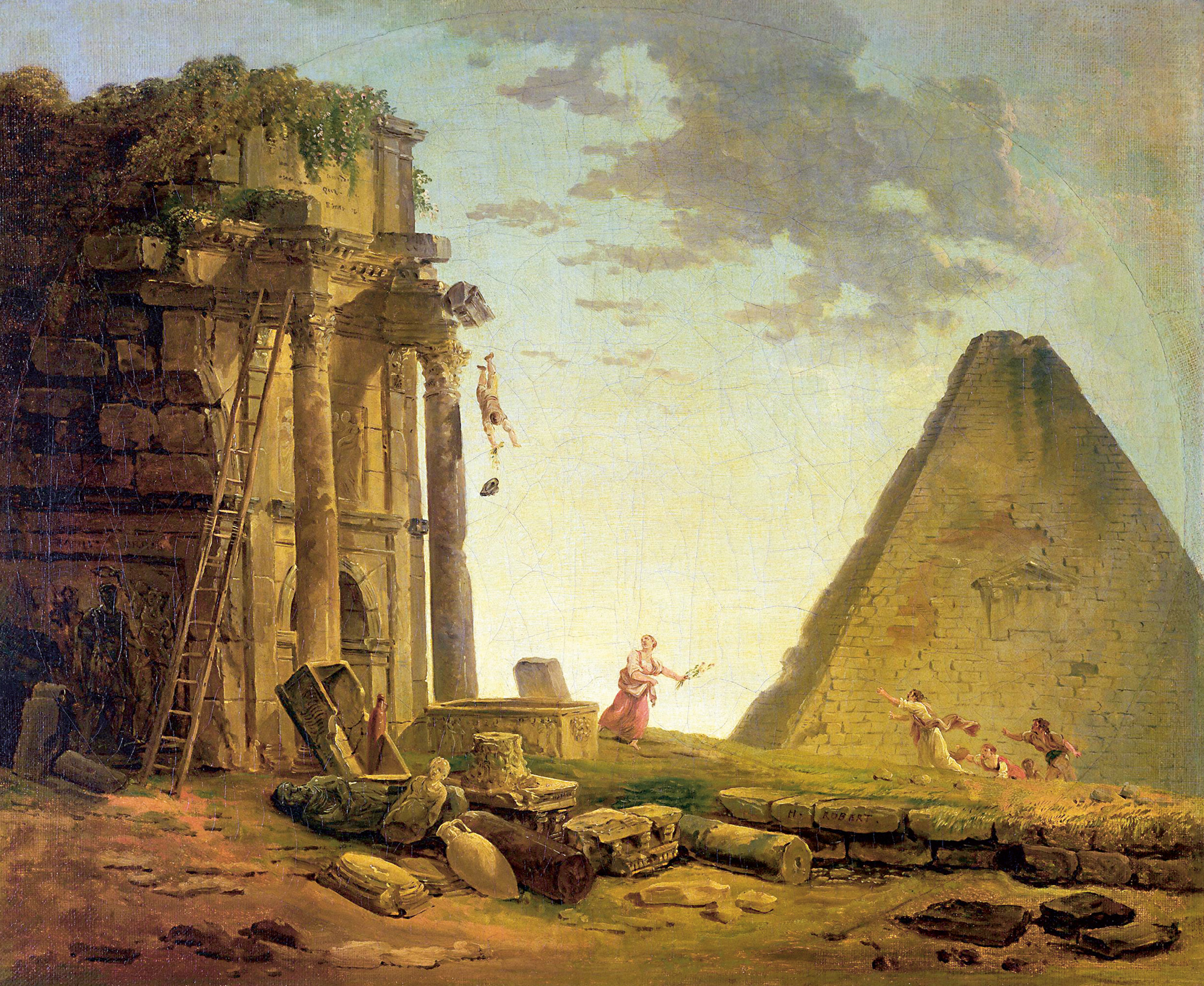Don’t Look Away
The comedy of the fall
Alexander Nagel

An afternoon frolic among the ruins has gone precipitously wrong. A young man is plummeting headlong from an ancient structure and nothing is going to save him. If the fall doesn’t finish him, the chunk of entablature following close on his heels surely will. A maiden nearby runs for safety, while other companions rush in, from too far away. A ladder shows how he got up to the fateful perch, where for a triumphant moment he became a living statue, replacing the stone one that had once stood on that spot—probably a stunt to impress the young lady below. But the re-enactment has gone too far; he now follows the trajectory of the statue that was first installed up there and then eventually tumbled down some time ago, reproducing in seconds what had taken centuries to happen.
The triumphal arch most resembles the Arch of Constantine in Rome, though the painting shows it in ruins, as if to give us an accelerated future and not just a past. Above the columns on the real Arch of Constantine stand barbarian captives of imperial wars, shown with their hands tied in front of their bodies. In the painting, we see just such a stone figure lying on the ground in front of the ruined arch, having fallen there who knows how long ago. Against the backdrop of this longue durée, our anti-hero has proposed a light Romantic scherzo on Great Events. I can imagine him declaring: “I am your captive, Amélie—nothing can release me from my bonds!” just as the cornice released him for good.
In a few moments, the youth will lie broken on the ground, joining the fragments of statuary that patiently await him there, and that will long outlast him. An open sarcophagus (literally, “flesh-eating” stone) is placed providentially beneath his falling body, promising a direct path to a burial appropriately free of pomp and ceremony, apart from the flowers he is bringing to it. The pyramid to the right looks like the tomb of Caius Cestius, which is in another part of Rome but has been brought closer, because the path from triumph to tomb is short, and history has its shortcuts.
The nameless fellow’s attempt to stride onto the grand stage of history has served only to accelerate, slightly, the monument’s collapse, while abruptly hurtling him to his own end. Monuments commemorate important deeds and grand triumphs (and thus great falls), but here the kind of small person who leaves no mark in history is made the subject of art, after failing to do it himself, and only because he failed. This painting resembles a pictorial ex-voto, which typically shows an ordinary person undergoing a terrible mischance—an illness, say, or an accident—with the difference that the ex-voto exist only because the protagonist was delivered from the misfortune by a holy figure invoked at the time of the misfortune. The ex-voto testifies to and commemorates the deliverance. Our tumbler has appealed to no higher power, or if he has, none has answered the call. And yet the painting exists, for no particular reason, capturing the non-deed mid-career.